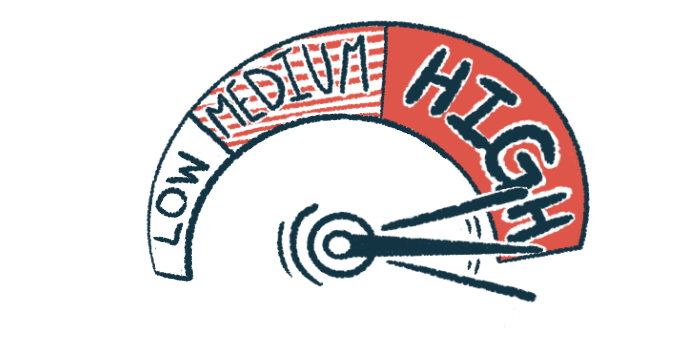Levels of resistin hormone help ID risk of worse outcomes in PAH
High levels tied to age, shorter 6-minute walk test, reduced heart performance

High blood levels of resistin, a hormone produced by fat cells, may help identify pulmonary arterial hypertension (PAH) patients at higher risk of clinical worsening, a large U.S. study suggests.
Resistin levels also could separate people with idiopathic, or unknown cause, PAH (iPAH) or scleroderma-associated PAH (SSc-PAH) from healthy controls.
The findings support resistin as a “novel biomarker for PAH prognostication and may indicate a new therapeutic avenue,” the study’s researchers wrote in “Resistin predicts disease severity and survival in patients with pulmonary arterial hypertension,” which was published in Respiratory Research.
PAH is caused by the narrowing of the pulmonary arteries that carry blood from the heart through the lungs, which leads to an increase in blood pressure and the heart’s right ventricle getting weaker. This narrowing is a consequence of pulmonary vascular remodeling, a process that involves the uncontrolled growth of smooth muscle cells, progressively thickening the arterial walls.
Resistin belongs to the larger resistin-like molecule (RELM) family of proteins that work as cytokines, small proteins that control the growth and activity of immune and blood cells. Resistin is important in inflammation and can predict poor clinical outcomes in people with cardiovascular disease and heart failure.
Resistin hormone levels as PAH biomarker
Here, a team led by researchers at Johns Hopkins University evaluated if resistin could be a biomarker of disease severity and worse survival in a large group of PAH patients.
Blood samples and clinical data from 1,121 adults with PAH (median age, 58; 81.9% women) were obtained from the National Biological Sample and Data Repository for PAH (PAH Biobank) in North America. Samples from 50 healthy people served as controls.
Among those with PAH, 808 had iPAH and 313 SSc-PAH. Most were receiving treatment with a phosphodiesterase-5 inhibitor (71.9%) or an endothelin receptor antagonist (56.7%).
Median blood levels of resistin were significantly higher in iPAH (6.2 nanograms per milliliter, ng/mL) and in SSc-PAH (8.28 ng/mL) than in the healthy people (3.84 ng/mL).
Resistin levels were able to discriminate PAH patients from healthy people, as shown by an area under the receiver operating characteristic curve (AUC) value of 0.85. AUC is a test of how well a measure can differentiate between two groups. Values can range from 0.5 to 1, with higher values indicating a better ability to tell the groups apart.
Resistin levels also significantly predicted iPAH (AUC of 0.82) and SSc-PAH (0.91) versus controls. A cutoff resistin level value equal to or greater than 4.54 ng/mL distinguished PAH or iPAH patients from the controls. The cutoff was 6.3 ng/mL for SSc-PAH.
High resistin levels in PAH were significantly associated with older age, a shorter distance in the six-minute walk test, which assesses exercise capacity, reduced heart performance, and higher right atrial pressure, which is the pressure in the upper right chamber of the heart.
A multivariate analysis, which takes different variables into account, confirmed that PAH patients with high resistin levels had a 2.6 higher mortality risk. The same analysis in iPAH revealed a 3.3-times higher risk.
When the researchers analyzed the RETN gene, which contains instructions for producing resistin, to look for three single nucleotide polymorphisms (SNPs), that is, a difference in a single nucleotide, the building block of DNA, they found two specific SNPs — rs3219175 and rs3745367 — associated with significantly higher resistin levels.
Finally, including resistin levels and SNPs in a mortality risk model improved its predictive power. Resistin was the fourth most important parameter in the model, after the REVEAL 2.0 risk score, age, and diastolic pulmonary gradient, a marker of pulmonary vascular remodeling.
The researchers said their study “provides evidence to support the use of circulating biomarkers as objective and accessible tools for noninvasive PAH risk stratification.”
“Additional clinical, genetic, and epidemiologic studies are warranted to strengthen the association between resistin and the prevalence, severity, and outcome of PAH,” they said.








